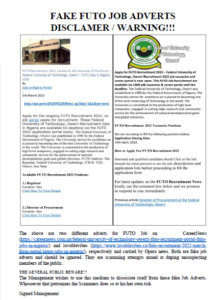| 1 | Ohaegbulam MC*, Izuwa NC and Onwukwe SI (2017) | Analysis of Wellbore Pressure Drop on Horizontal Well Performance | The problem of wellbore pressure drop on horizontal good performance has been a concern to many researchers and the petroleum industry. Wellbore pressure losses in horizontal well not only increase gas or water conning tendency at the heel of the wellbore but also chokes oil production at the distant part of the wellbore especially forlong horizontal wellbore thereby rendering some part of the horizontal well unproductive. This limits the usefulness of increasing the horizontal well length due to wellbore pressure losses along the horizontal well. A coupled reservoir wellbore model was developed in this work using Nodal analysis concept to investigate the performance of horizontal well by considering all the possible pressure losses in a horizontal well under inflow conditions. Sensitivity analysis of parameters that affect horizontal good productivity under wellbore pressure losses was performed. Results show that there exists an optimum horizontal well length beyond which oil production rate will no longer be proportional to the horizontal well length and that wellbore pressure drop effects is severe in a high productive reservoir with oil viscosity between 0.5 to 1cp or reservoir permeability of more than 200 MD. | Oil Gas Res, an open-access journal | Volume 3 • Issue 2 • 1000138
|
| 2 | YikareboghaYibudongha and Dr NkemakolamChinedu Izuwa (2017) | Bit Performance Evaluation: A Case Study Of Field A, Niger Delta, Nigeria | The evaluation of the performance of drilling bits used to drill the top hole section in well-1 and well-2 of Field A, Niger Delta was carried out. The evaluation methods used in this study are the cost per foot and drilling specific energy. From the evaluation, the Smith bit used in drilling well-2 has the least cost per foot of $27.3, while the Hughes bit used to drill well-1 has a cost per foot of $30.36. Also, the drilling specific energy of the Smith bit for well-2 is 371MJ/m3 and the value for the Hughes bit used to drill well-1 is 545.3MJ/m3. From the analysis, both the cost per foot and drilling specific energy evaluation show that the Smith used in drilling well-2 in the most economical as it has the least cost per foot and drilling specific energy. Keywords: Drilling bits, Niger Delta, Evaluation, Performace, Penetration. | | Volume 6, Issue 2, March-April 2017
|
| 3 | Nwachukwu, A. N, Chukwu, G. A, Onwukwe, S.I., Chukwu, F.I & Obah, B (2017) | Characterization of Identified Niger Delta Waxy Crudes | The separation of wax as a solid phase from wax- prone crude oils and subsequent accumulation in tubings, lowliness, process equipment and pipelines is a major problem confronting the oil industry all over the world with its attendant high operational costs. To address these problems, this paper seeks to characterize waxy crudes for wax deposition tendency. Eighteen representative samples of crude oils from the four identified Niger Delta waxy oil fields were obtained and characterized for tendencies to deposit wax. N-paraffin distribution was measured with high-resolution gas chromatography (HRGC) while WAT was measured with cross-polar microscopy (CPM). The compositional data of the waxy crudes were further characterized to establish the degree of waxiness (DOW) using a correlation generated from n-paraffin distribution. There are indications of wax deposition tendencies for all tested crude samples. WAT varied from 20oC to 51.1oC. The DOW obtained varied for each well fluid and field. Variations were small for good fluids from the same field whereas the variations widen across fields. Knowledge of the degree of waxiness of good fluids could assist in the selection of wax remediation options and determining the frequency of wax removal operations. Keywords: Niger Delta (ND), waxy crudes characterization, CPM, wax appearance temperature, HRGC, n-paraffin composition, degree of waxiness | Petroleum Technology Development Journal | Vol. 7/No 1 (pages 64 – 76)
|
| 4 | Modestus Okechukwu Okwu and Angela N. Nwachukwu( 2018) | Review of Fuzzy Logic Applications in Petroleum Exploration, Production and Distribution Operations | Petroleum exploration and production business thrives with in-depth knowledge and understanding of the subsurface. Technological advancement has helped in furnishing the industry with much information about the petroleum reservoir; however, a lot of uncertainties still exist due to the nature of the subsurface. The industry has strived to address this problem in diverse ways; regrettably, the classical methods relied upon have failed to provide a proper guide to management decision in exploiting these reservoirs. In recent times, artificial intelligence techniques, particularly Fuzzy Logic (FL), have been identified as a potential tool to deal with the uncertainties encountered in most exploration and production (E&P) operations. This research provides a review of FL applications in E&P operations under non-deterministic input parameters, possible challenges and solution procedures using FL sensitivity analysis and rule viewers. The focus is on reservoir characterization for reservoir evaluation, drilling/completion operations and stimulation treatment. The study also examines the extent FL could be applied to extract useful information from the large volume of historical oil and gas data already on the shelf and the future gaps to fill. A case study was presented which considered cost optimization in Liquefied Petroleum Gas (LPG) distribution operations using fuzzy logic. Keywords: Fuzzy logic · Reservoir · Cost optimization · LPG | Journal of Petroleum Exploration and Production Technology (Springer Journals) | https://doi.org/10.1007/s13202-018-0560-2
|

